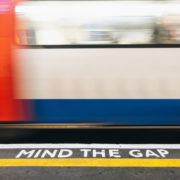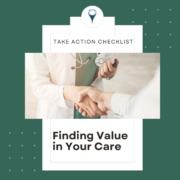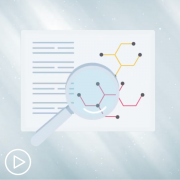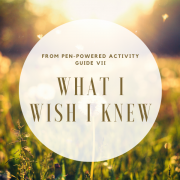Mind the Gap: How to Handle a Cancer-Related Absence in Your Work History
Are you looking for a new job after cancer treatment? Perhaps you left your last employment after your diagnosis, or maybe you are still in your current job but want a fresh start in a new position, one which offers you more flexibility or a new career direction.
If you had to leave a job to undergo treatment, this brings up the question of how to explain those missing months (or years) from your work history. How do you account for this time when updating your resume? Will you be expected to talk about it at an interview?
Let’s start with your resume.
For the moment, put aside any worries you may have about how to explain the gap in your job history. Instead, grab a pen and a piece of paper and list at least ten great qualities and skills you have. Ask your friends and family to help you brainstorm the list if you get stuck.
When it comes to writing your resume, forego the traditional chronologically based CV (listing job titles, companies and dates in chronological order), in favor of a more dynamic skills-based resume. If you really do need to add your work history include the number of years of service, rather than detailed dates.
Go through your list from earlier and circle any skills that relate to the job for which you are applying. Add your skills in bullet point format and under each bullet point, provide an example of an area of accomplishment related to this specific skill.
Review Your Digital Footprint
One of the things that I wish now I was more mindful of at the time of my own diagnosis, is the digital footprint I was leaving for future employers to find. Many of us turn to social media sites and blogs to keep our families and friends updated on our progress and to seek support during cancer treatment. But when your focus returns to work, you may not want your employer or prospective employer to know of your cancer history.
With an increasing number of employers Googling prospective candidates, you may want to take some steps to protect your privacy online.
- Google yourself to see what people who search for you online will find.
- Set your privacy settings on sites like Facebook and Instagram to high so that nothing will be seen by people who aren’t on your friends and family list.
- Delete what you can from your postings on Facebook and other media that talk about your cancer.
- Set up a Google Alert to monitor mentions for your name online.
Create a Professional LinkedIn Profile
When it comes to your digital footprint it’s not all bad news. There is still one social network that you can turn to your advantage when it comes to job seeking. Spending time on creating a professional profile on LinkedIn can be enormously helpful to present the best online impression to prospective employers. Because of the way Google’s search algorithm works, an optimized LinkedIn profile will frequently show up in the first few places of a Google search for your name.
While you may already have a profile on the platform, is it optimized for a job search? LinkedIn profile optimization simply means that your LinkedIn profile is fully updated to maximize your visibility on the platform.
Here are some quick tips to optimize your profile:
- Make your first visual impression count by displaying a high-quality professional photo.
- Adding a background image directly behind your photo will help brand your profile. Think of it as your professional billboard.
- Create a strong professional headline. This is a critical step because your professional headline is not just highly visible on LinkedIn, it’s also searchable by Google.
- Nurture your LinkedIn relationships through regular engagement. This is not about making large numbers of contacts; rather, it’s about making meaningful connections.
- Join industry-relevant groups. Job openings are often posted by recruiters in industry groups. You will find groups by clicking on Interests > Groups from your profile or searching keywords to identify groups with interests similar to yours.
- Be strategic about when you’re active on LinkedIn. As a general rule, LinkedIn users are most active right before and after work (7–8 am and 5– 6 pm), as well as during lunchtime.
Handling the Job Interview
Congratulations, you’ve made it to the interview stage. Remember, you do not have to mention your cancer diagnosis during either the application or interview phase. If an interviewer draws attention to a gap in your career history, have a prepared explanation that you feel comfortable with – for example, you might put the gap down to personal issues that are resolved now. Then turn the conversation back to your strengths and suitability for the job. The more you prepare your answers prior to the interview, the more relaxed and at ease, you will come across during the interview.
Of course, you may decide to be upfront about your cancer diagnosis. Salivary gland cancer survivor and author of Travail et Cancer, [1] Magali Mertens de Wilmars, encourages job seekers to ask themselves “if you want to work for someone who would take the fact that you’re a cancer survivor as a weakness?”
What If You Decide Not to Conceal Cancer?
Everything I’ve written thus far supposes you have finished active treatment. What happens, if, you are, in the words of melanoma patient, Kay Curtin, “a cancer patient, who is well, but will always be in treatment,”? “Would we have the same resistance to disclose if say we were diabetic?” she asks. “How will I be perceived by potential employers, will they want to invest in me or is self-employment the lesser of two stressors?”
My own decision to start a blog after my breast cancer diagnosis sealed my fate for the future. It has forced me to be open about my cancer history, a decision which in turn catalyzed a new (self-employed) direction for my career. For me pivoting my career to patient advocacy is one of the more positive things to emerge from cancer. Perhaps this too will be an opportunity for you to reconsider how, instead of concealing your cancer history, you might use the experience to decide on a new direction for your own life.
Notes
[1] Travail&Cancer (travailetcancer.org)

A Stanford Medicine X e-Patient scholar, Marie Ennis O’Connor is an internationally recognized keynote speaker, writer, and consultant on global trends in patient engagement, digital health and participatory medicine. Marie’s work is informed by her passion for embedding the patient voice at the heart of healthcare values. She writes about the experience of transitioning from breast cancer patient to advocate on her award-winning blog Journeying Beyond Breast Cancer.










